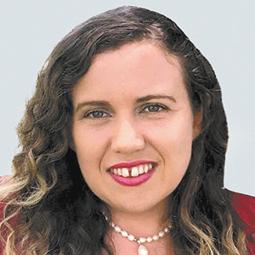Western Australia (WA) has delivered its sixth consecutive budget surplus.
WA Treasurer Rita Saffioti said the state’s economy was “firing on all cylinders” amid a record population boom of 94,000 people and a high inflation cycle.
“This budget rises to the challenge and helps Western Australians with the cost of living,” she said.
“It delivers the infrastructure to continue job creation, diversify our economy, and advance economic growth.”
Health, education, training, and infrastructure are all set to receive record spends.
The state will aim to increase doctor and nurse numbers as part of a $3.2 billion (US$2.1 billion) splash on health services, while training and education will benefit from a $1.3 million financial boost.
A sum of $12.1 billion has been set aside for infrastructure in the rapidly growing state.
Ms. Saffioti said the budget was expected to remain in surplus for the next four years.
“Relative to the size of Western Australia’s economy, our net debt forecasts remain the most affordable in the nation,” she said.
Where the Government Is Spending
Net debt is lower than forecast at $28.6 billion in 2023-24, more than $15 billion lower than projected and a $2.6 billion operating surplus is predicted for 2024-25.Health and mental health will receive a record spend of $3.2 billion, with more doctors, nurses and beds slated across the state, while a $1.8 billion investment will go towards attracting new and existing industries in order to position WA as a clean energy leader.
While falling short of Queensland’s $1,000 initiative for power bill relief, householders and business owners in WA will benefit from a $400 electricity credit, as part of a $762 million allocation for cost-of-living relief.
A record $1.3 million spend will go towards education initiatives and job training with another record amount of $12.1 billion to be spent on infrastructure across 2024-25 to help boost the economy and meet the needs of a growing state.
Housing and homelessness will also receive a $1.1 billion spend with a focus on boosting supply and affordability.
Perth’s CPI has moderated to 3.4 percent, below national inflation at 3.6 percent.
Missed Tax Cut Opportunity: Economist
John Humphreys, Chief Economist of the Australian Taxpayers’ Alliance, told The Epoch Times that data from the budget showed WA was in a much better financial situation than other states such as Victoria.However, Mr. Humphreys said state budgets could sometimes be deceptive as they tended to calculate their surpluses with a different metric to the federal government—namely, an operating surplus rather than a fiscal surplus, the latter being a more grassroots determination of money in the bank.
“If we look at the more appropriate metrics used by the federal government, they are actually still in surplus, albeit at a lower level,” he said.
“The fiscal surplus is predicted to be $1.4 billion and the underlying cash balance is predicted to be $1.7 billion for the coming year.
“And to their credit, they do report the underlying cash balance on Table 1 (page 36 of their budget document), instead of hiding it in the back of the budget.”
Mr. Humphreys said while this made the budget surplus less stocked up than claimed, the results still represented good macroeconomic management, and “much better than the whopping $15.2 billion underlying cash deficit that Victoria released earlier this week.”
He said there were some areas where the budget could have been improved.
“My criticism of this budget is the missed opportunity to boost productivity by cutting taxes, with only a miserly increase in the threshold that applies to the stamp duty on homes, which doesn’t keep pace with the sharp rise in house prices,” Mr. Humphreys said.
“With a bit of spending restraint, the WA government could have sharply increased the payroll tax threshold so that more small businesses are exempt, and entirely abolished the inefficient and unhelpful tax on insurance, while maintaining a balanced budget.”







